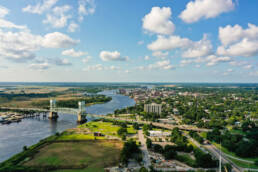Wilmington Urban Design Guidelines
This document is a comprehensive and sustainability-focused capital project toolkit designed to guide the implementation of the Create Wilmington Comprehensive Plan. It provides a framework for construction and development that considers multi-generational impacts and acknowledges the need to address the impacts of historical decisions on marginalized and vulnerable communities.
Much of Wilmington’s charm comes from its coastal and riverside proximity, historical importance, and walkable neighborhoods. Its success in implementing prior urban design practices has contributed its national appeal. For example, the Riverwalk promenade, the Brick Streets Program, and the Historic District expansion are all recommendations from the city’s original Urban Design Policy adopted in 1989. These endeavors have helped Wilmington share its culture with visitors while protecting its natural and cultural assets for future generations.
This toolkit provides guidance and information on best urban design practices. It is organized by the Triple Bottom Line framework to balance the environmental, social, and economic impacts of capital projects. Ecological integration, human well-being, and transportation & economy represent the triple bottom-line categories. Additionally, policy guidance from the Create Wilmington Comprehensive Plan is summarized for each topic area, with relevant policies listed in the appendix.
LocationWilmington, NCYear2022









